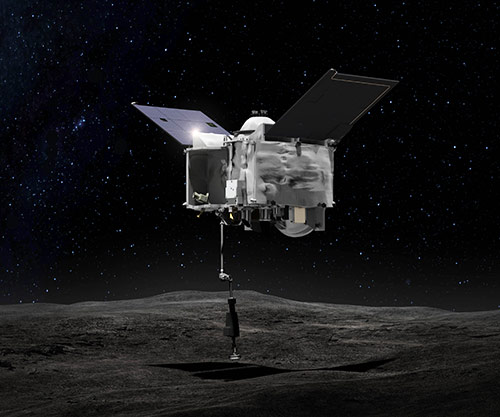
Johnna L. McDaniel
Contamination Control Specialist - NASA's Kennedy Space Center
This short Q&A was featured in a Nov. 19, 2018 article introducing a selection of people who work on the OSIRIS-REx mission to explore asteroid Bennu.
Expertise: Anti-Contamination Cleaning
Hometown: Cocoa, Florida
It is my responsibility to ensure that the Payload Hazardous Servicing Facility (PHSF), where the payload is housed, is kept to specified cleanliness requirements. The PHSF is where the payload is kept to complete final integration and testing. It is also where they fuel the payload and encapsulate it before it is transported to the rocket on the launchpad. I try to make people feel comfortable when they come to the PHSF, because, after all, it is a hazardous facility. The contamination personnel tell me the cleaning requirements for each mission; these can take effect 30 days before the payload is even delivered. The requirements can include things like wiping the walls, cleaning the floors, pulling the trash, ensuring the tacky mats are always clean. I am also responsible for the changing room where engineers put on cleanroom suits before entering the area where the spacecraft is. I try to get in first thing every morning and get my duties accomplished so that I am not in the way when people are working on the payload.
No. I’ve been doing this since 1989. I enjoy being able to see each payload and meet the people that have worked on it from the beginning.
I have to stay three feet away from the payload. I have to wear a cleansuit just like the folks who work on the payload. Sometimes, I even have to wear an eyehood, face mask, and gloves. The clothing requirements depend on the payload. With OSIRIS-Rex, we could not wear any items made with nylon. This was because they have amino acid-based polymers in them and would have contaminated the spacecraft. I even had a special bucket for mopping.
Back in December 1989, my uncle worked at Kennedy Space Center. He helped me get a job as a facility support specialist working in some of the cleanrooms. I just loved it. I ended up getting laid off twice, though. After the first time, they called me back. After the second time, I became a certified nursing assistant. I worked as a nursing assistant for only two days before a coworker called to tell me about a job opening as a contamination control specialist. I applied and got the job. I love my job; I really love my job. I love seeing the different spacecraft and watch history being made. I feel like I’m blessed.
OSIRIS-REx is NASA's first asteroid sample return mission. It is exploring a near-Earth asteroid called Bennu (formerly 1999 RQ36), and bring a sample of that small world back to Earth for study.
Planetary science is a global profession.


